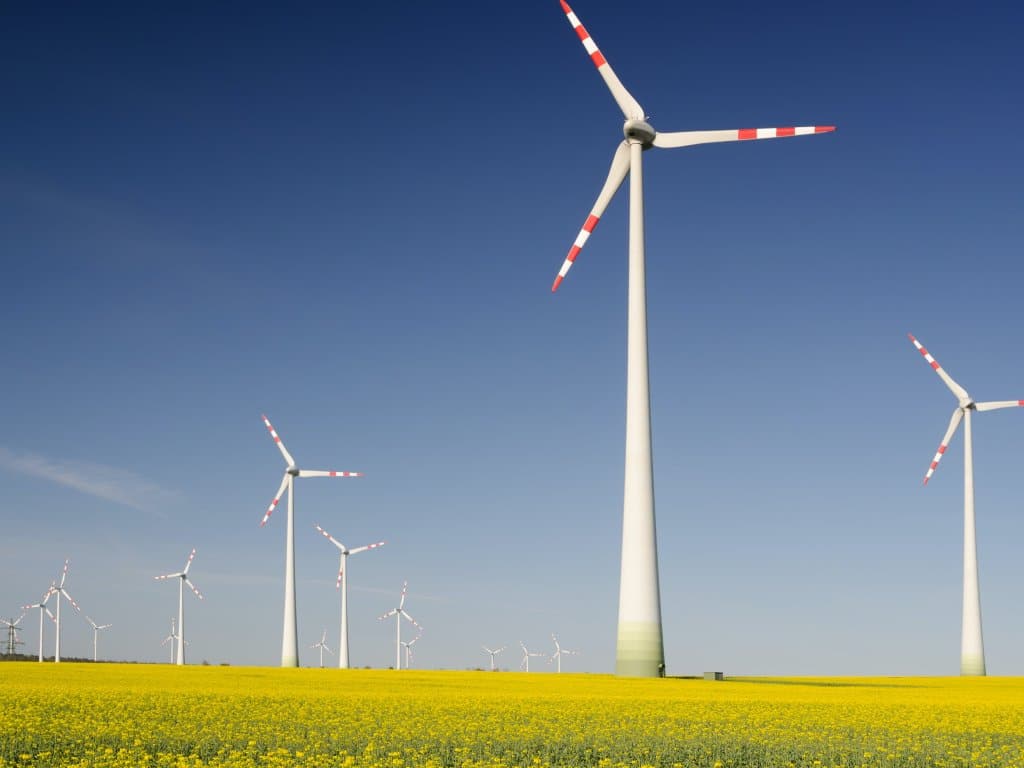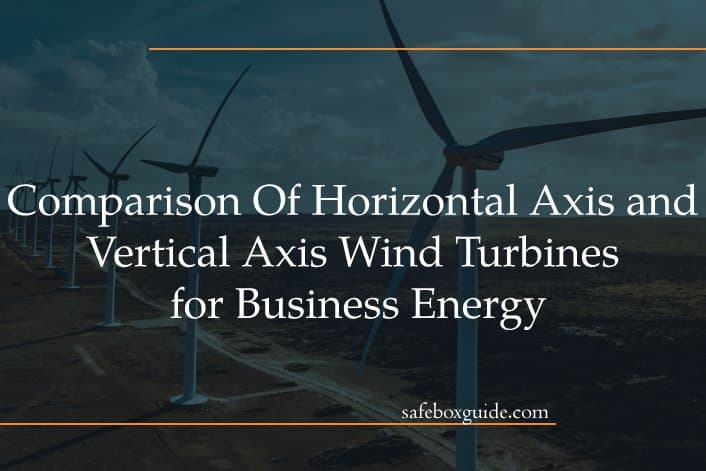The primary distinction between horizontal and vertical axis wind turbines is their axis orientation, which varies in size and design. A vertical propeller spins around a horizontal axis in a horizontal axis wind turbine. In contrast, blades rotate around a vertical axis in a vertical axis wind turbine, facing the wind vertically.
Through years of use, it has become evident that horizontal axis wind turbines, or HAWTs, work best in wide spaces, whereas vertical axis wind turbines, or VAWTs, have fewer limits and can thus be installed on hilltops and rooftops in cities. This energy business comparison will support the factual aspects of different wind turbines.
Horizontal Axis Wind Turbine

Blades on a horizontal axis pointed parallel to the ground are used by horizontal axis wind turbines to harness wind energy. HAWT faces the wind perpendicularly for wind turbine blades to revolve in response to an aerodynamic lift.
Because of the ability to generate more energy through a full rotation of the blades in terms of constant wind flow, horizontal axis WTs dominate the wind energy market. Additionally, the resistance to backtracking of horizontal axis wind turbines makes them advantageous for this powerful production.
Horizontal axis wind turbines must be positioned in the wind direction to operate at maximum efficiency. The efficiency of energy production may occasionally decrease dramatically if the wind direction is variable.
However, this disadvantage is eliminated when a horizontal axis wind turbine farm is situated in a correctly chosen place with a constant, same-directional wind flow.
While big wind turbines include a yaw meter to adjust the wind turbine position to maintain alignment with the wind stream, tiny wind turbines frequently have a wind vane to align with the wind direction. Consistent, stable wind flow is essential when an operator seeks a cost-effective solution.
Vertical Axis Wind Turbine
A vertical axis wind turbine operation uses drag and lifts effects to cause the blades to rotate perpendicular to the ground and around the vertical axis. Although less common than HAWTs, VAWTs can receive and process wind from any direction, making them ideal for urban and suburban regions with erratic, turbulent winds.
The gearbox and several other wind turbine components can be installed closer to the ground. A wind turbine user can greatly reduce maintenance costs, improving co-living circumstances and less loud construction.
Due to the blades of vertical axis wind turbines turning in the direction of the wind while they must first travel back into the wind stream before being driven around, these machines are particularly vulnerable to backtracking.
In the end, fresh studies demonstrate that there are not many differences between vertical axis wind turbines and horizontal axis ones – the wind turbine efficiency primarily depends on the local wind conditions and desired power generation output volume.
There are specific pros and cons to both horizontal and vertical axis wind turbine designs. A developer must first choose whether they want a wind turbine to self-procure or to monetize wind energy, converting wind turbines into a reliable source of long-term income.

